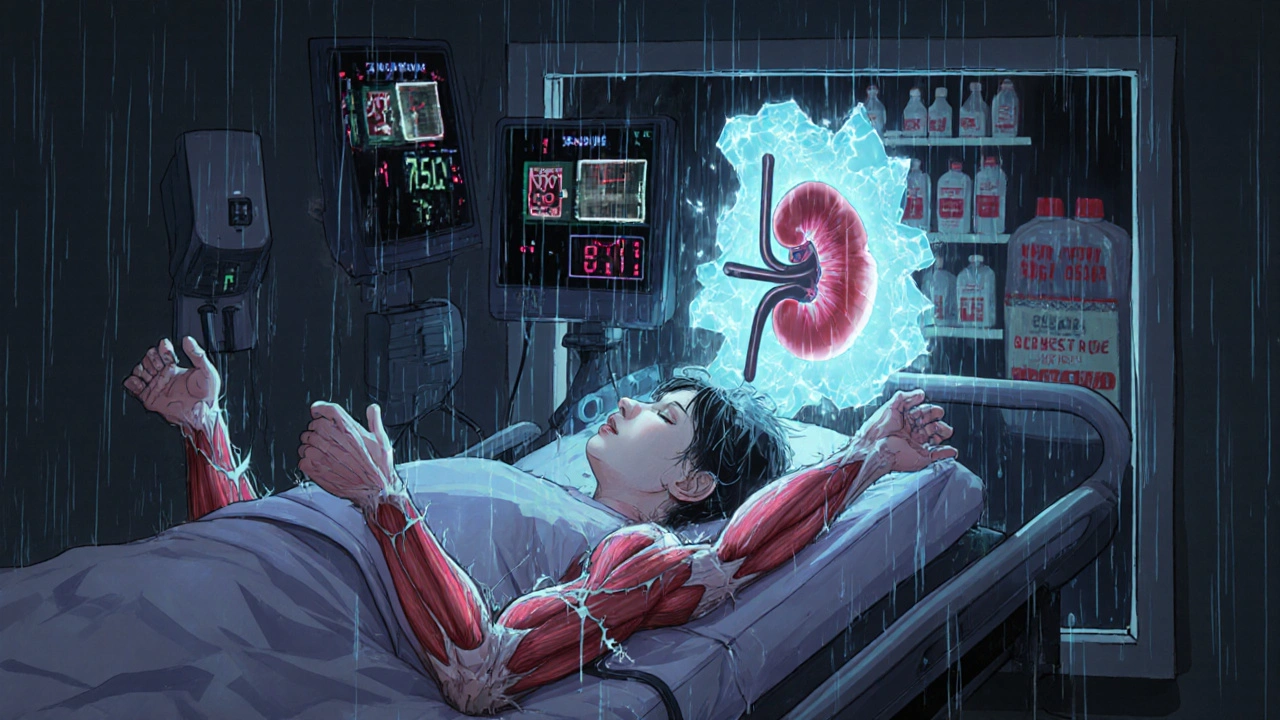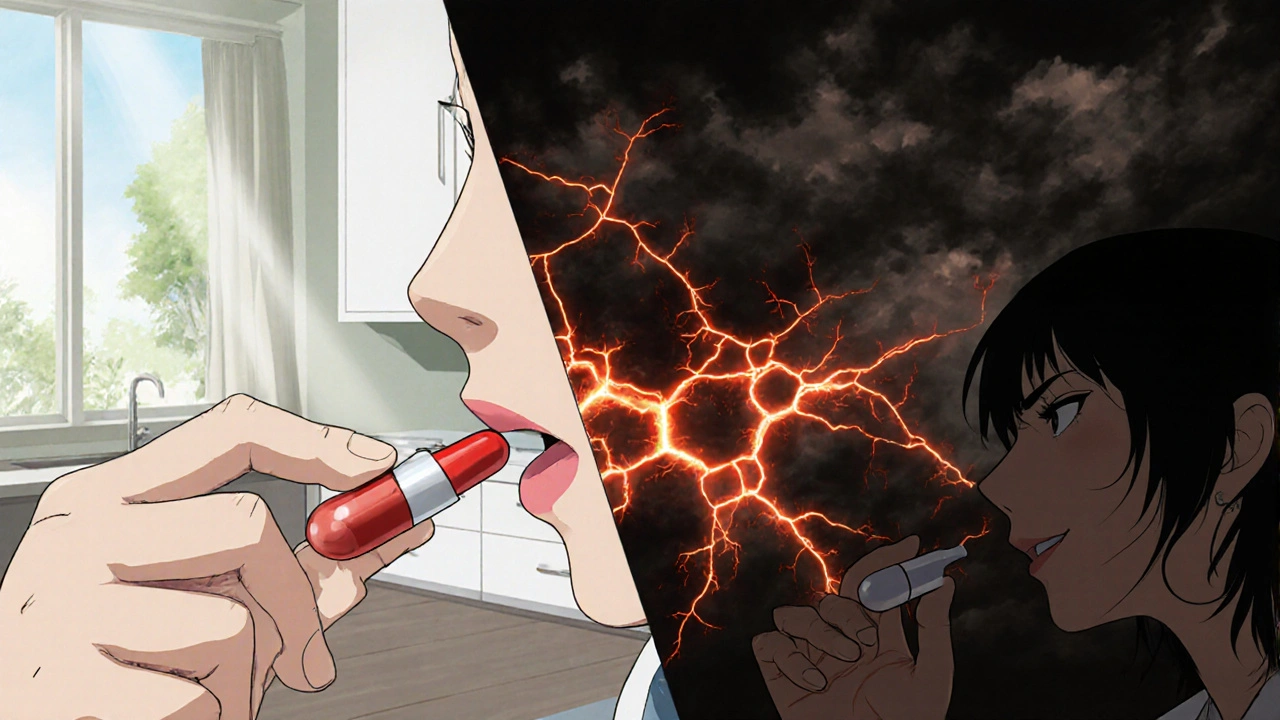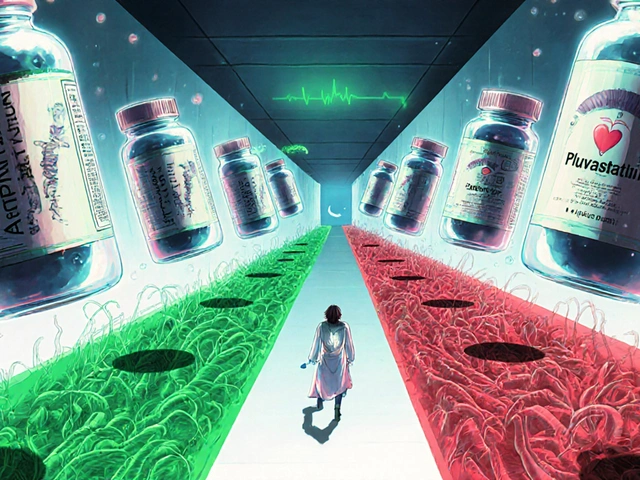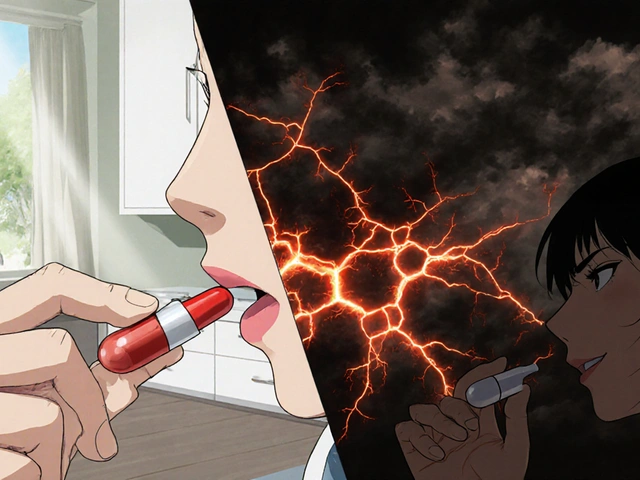Red Yeast Rice & Statin Risk Calculator
Determine Your Risk
This calculator estimates the combined risk of taking red yeast rice with prescription statins based on your dosage and product quality.
Millions of people take statins to lower their cholesterol. But if you’re one of the many who can’t tolerate them-muscle pain, fatigue, or liver issues-you might have turned to red yeast rice as a "natural" fix. It sounds safe. It’s been used for centuries. It’s sold next to vitamins in grocery stores. But here’s the hard truth: if you’re already on a statin, taking red yeast rice could land you in the hospital.
What Is Red Yeast Rice, Really?
Red yeast rice isn’t just a spice or a traditional herb. It’s a fermented rice product made by culturing rice with a mold called Monascus purpureus. In ancient China, it was used for digestion and circulation. But modern science uncovered something far more powerful: it contains monacolin K, which is chemically identical to lovastatin-the first statin drug ever made. That means red yeast rice doesn’t just "support" cholesterol levels. It actively blocks the same enzyme in your liver that statins do: HMG-CoA reductase. This enzyme controls how much cholesterol your body makes. Block it, and cholesterol drops. That’s why red yeast rice works. But it’s also why it’s dangerous when paired with prescription statins.Why This Isn’t a "Natural Alternative"-It’s Duplicate Therapy
Calling red yeast rice a "natural alternative" is misleading. It’s not an alternative. It’s a duplicate. You’re not choosing between a drug and a supplement. You’re taking two versions of the same drug. Prescription statins like atorvastatin, rosuvastatin, or simvastatin are tightly regulated. Each pill contains a precise dose. Red yeast rice? Not even close. A 2022 ConsumerLab.com test found that only 30% of red yeast rice products matched their label claims. Some had zero monacolin K. Others had up to 34 mg per gram-far more than a typical statin dose. If you’re taking 1,200 mg of red yeast rice daily, you might be getting 3-5 mg of monacolin K. That’s roughly the same as 10-20 mg of lovastatin. Now add a 20 mg daily dose of atorvastatin on top of that? You’re doubling up on the same mechanism. No doctor would prescribe two statins together. But people do this with supplements-and don’t even realize it.The Real Risk: Muscle Damage and Rhabdomyolysis
The most terrifying consequence of combining red yeast rice and statins is rhabdomyolysis. That’s when muscle tissue breaks down so badly that it floods your bloodstream with proteins like creatine kinase (CK). Your kidneys can’t handle it. You can suffer kidney failure, permanent nerve damage, or even die. Case reports are chilling. One Reddit user, "CardioWarrior99," took 1,200 mg of red yeast rice while on 20 mg of atorvastatin. His CK levels spiked to 18,500 U/L. Normal is under 200. He was hospitalized for rhabdomyolysis. Another case documented by WebMD showed liver enzymes (ALT) jumping to 450 U/L-more than 10 times the normal range-after combining the two. The American Heart Association, Mayo Clinic, and Johns Hopkins all warn: do not combine them. The risk of muscle damage increases by 3.7 times. The FDA’s adverse event database shows 127 serious cases between 2018 and 2022 involving this exact combo. That’s not a coincidence. It’s a pattern.Who Might Actually Benefit from Red Yeast Rice?
Not everyone who takes red yeast rice is in danger. The real opportunity is for people who can’t take statins at all. Studies show about 60% of patients who quit statins due to muscle pain can tolerate red yeast rice instead-especially if they start with a low dose (600-1,200 mg daily) and use a product verified by USP (U.S. Pharmacopeia). In one 2019 study published in the Journal of the American College of Cardiology, red yeast rice lowered LDL cholesterol by 21-30% compared to placebo. That’s on par with low-dose statins. In another, statin-intolerant patients saw LDL drop by 30-40 mg/dL after switching to red yeast rice. No statin. No side effects. Just results. But here’s the catch: this only works if you stop the statin first. You can’t have both. You have to choose one or the other.
What About Contaminants? Citrinin and Other Hidden Dangers
Red yeast rice isn’t just unpredictable because of dosage. It’s also contaminated. The same mold that produces monacolin K can also produce citrinin-a kidney-toxic mycotoxin. A 2017 European Food Safety Authority report found citrinin in 25-30% of commercial red yeast rice products. Long-term exposure can lead to kidney damage, even without symptoms. That’s why third-party testing matters. Look for the USP Verified mark. It means the product has been tested for monacolin K content, citrinin levels (must be under 2 ppm), and heavy metals. Only about 15% of products on the market have this certification. The rest? You’re playing Russian roulette with your kidneys.How to Use Red Yeast Rice Safely (If You Choose To)
If you’re considering red yeast rice because statins hurt your muscles, here’s how to do it right:- Stop your statin completely. Don’t taper. Don’t overlap. Quit cold turkey under your doctor’s supervision.
- Get baseline blood tests: liver enzymes (ALT, AST), creatine kinase (CK), and kidney function (creatinine).
- Choose only USP-verified red yeast rice. Avoid brands that don’t list monacolin K content or don’t mention testing.
- Start with 600 mg daily. Wait 8-12 weeks before retesting cholesterol. Maximum effect takes time.
- Avoid grapefruit juice, certain antibiotics (like clarithromycin), and antifungals-they interfere with how your body breaks down monacolin K, increasing toxicity risk.
- Get blood tests again at 3 months and annually. Muscle pain? Fatigue? Nausea? Stop immediately and call your doctor.
What Are the Alternatives?
If you’re statin-intolerant, you don’t have to rely on red yeast rice. There are other options:- Ezetimibe: A prescription pill that blocks cholesterol absorption in the gut. Works well with or without statins, minimal muscle side effects.
- PCSK9 inhibitors: Injectable drugs (alirocumab, evolocumab) that lower LDL by up to 60%. Expensive ($300+/month) but extremely safe.
- Extended-release niacin: Can raise HDL and lower triglycerides, but causes flushing and liver issues in some.
- Lifestyle changes: Soluble fiber (oats, beans), plant sterols, and regular aerobic exercise can lower LDL by 10-20% on their own.

Why Doctors Are Frustrated
Most doctors don’t know how to talk about red yeast rice because the market is a mess. A 2022 survey found only 38% of primary care doctors could correctly match red yeast rice doses to statin equivalents. And 45% of patients never tell their doctors they’re taking supplements. That’s why so many cases go unnoticed until it’s too late. A patient says, "I’m just taking a natural cholesterol pill." The doctor assumes it’s harmless. The patient doesn’t mention the statin. Two months later, they’re in the ER with muscle pain and dark urine. The solution? Always tell your doctor everything you take. Even if it’s "just a supplement."Final Reality Check
Red yeast rice isn’t evil. It’s not magic. It’s a potent, unregulated drug that happens to be sold as a supplement. It works-but only if used alone. And only if you know exactly what’s in the bottle. If you’re on a statin, stop. Don’t add red yeast rice. You’re not being "natural." You’re risking your muscles, your kidneys, and your life. If you can’t tolerate statins, talk to your doctor about alternatives. Red yeast rice can be part of the solution-but only if you stop the statin first. No exceptions. No compromises.Frequently Asked Questions
Can I take red yeast rice with a low-dose statin?
No. Even a low-dose statin combined with red yeast rice creates a dangerous overlap in how your body processes cholesterol. The risk of muscle damage and rhabdomyolysis increases significantly. There is no safe dose combination.
Is red yeast rice FDA-approved?
No. The FDA considers red yeast rice products containing monacolin K to be unapproved drugs. The agency has issued over a dozen warning letters to manufacturers since 2008. It’s sold as a supplement because of a legal loophole, not because it’s been proven safe or consistent.
How do I know if my red yeast rice product is safe?
Look for the USP Verified mark on the label. This means the product has been independently tested for monacolin K content, citrinin contamination, and heavy metals. Avoid products that don’t list monacolin K amounts or that don’t mention third-party testing.
How long does it take for red yeast rice to lower cholesterol?
It takes 8 to 12 weeks to see full effects. Don’t expect immediate results. Blood tests at 3 months are the best way to measure progress. Consistency matters more than high doses.
Can red yeast rice damage my liver?
Yes. Like statins, red yeast rice can raise liver enzymes. In some cases, ALT levels have jumped above 400 U/L when combined with statins. Regular liver function tests are essential if you use it long-term.
What should I do if I’ve already taken red yeast rice with a statin?
Stop both immediately and contact your doctor. Get a blood test for creatine kinase (CK) and liver enzymes. Muscle pain, weakness, dark urine, or nausea are warning signs. Don’t wait-early intervention can prevent permanent damage.


